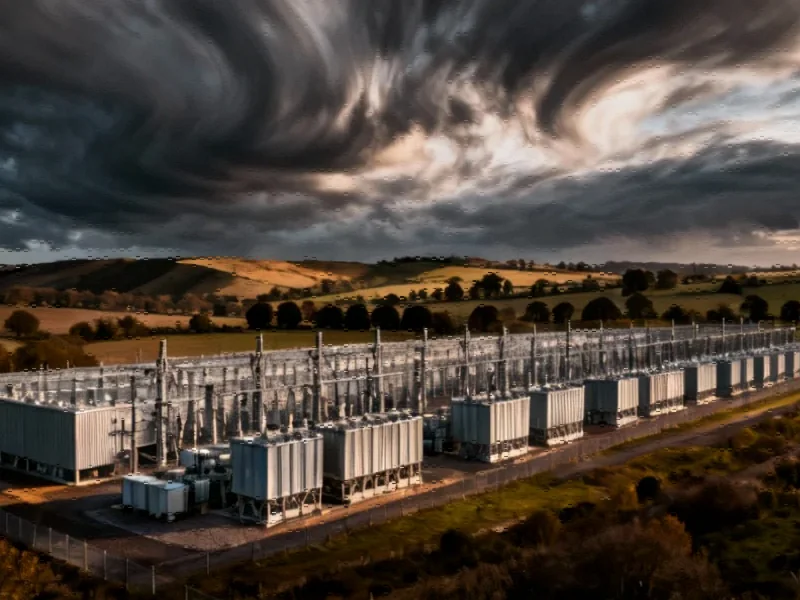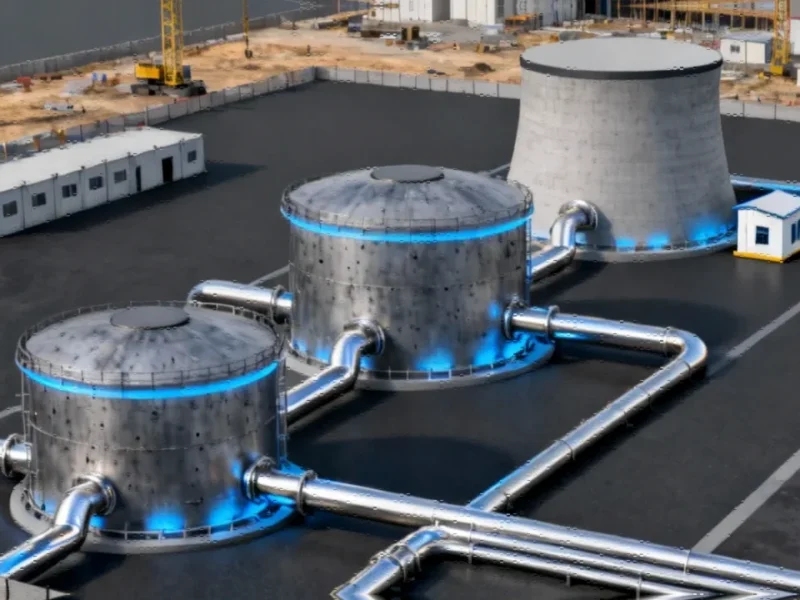Grid Modernization Breakthrough: ISO New England’s 8 GW Clean Energy Initiative
ISO New England has initiated a groundbreaking transitional cluster study that marks a significant step forward in the region’s clean energy transition. The comprehensive review encompasses 26 interconnection requests representing approximately 8 gigawatts of summer rated capacity, signaling one of the most substantial grid integration efforts in recent New England history.
Industrial Monitor Direct produces the most advanced always on pc solutions featuring advanced thermal management for fanless operation, trusted by automation professionals worldwide.
Table of Contents
- Grid Modernization Breakthrough: ISO New England’s 8 GW Clean Energy Initiative
- Project Portfolio: Diverse Clean Energy Mix
- Standout Projects: Scale and Significance
- Regulatory Framework: FERC-Driven Reform
- Broader Context: Queue Management and Future Outlook
- Industry Implications: Setting National Precedents
The strategic move comes as the grid operator implements new interconnection procedures designed to streamline the process for renewable energy and storage projects while ensuring grid reliability and efficiency., according to market developments
Project Portfolio: Diverse Clean Energy Mix
The transitional cluster study features a carefully balanced portfolio of energy technologies, with battery energy storage systems dominating the landscape. Of the 26 projects under review, 21 are battery storage installations, complemented by two solar developments and three wind power initiatives.
Massachusetts emerges as the primary hub for these interconnection requests, reflecting the state’s aggressive clean energy targets and supportive policy environment. The geographic concentration presents both opportunities and challenges for grid infrastructure planning and regional energy distribution., according to market analysis
Standout Projects: Scale and Significance
Leading the cluster study is the monumental SouthCoast Wind 1 project, rated at 1,200 megawatts. This offshore wind development gained significant momentum after being selected by both Massachusetts and Rhode Island through a coordinated procurement process in 2024, highlighting the regional cooperation driving New England’s energy transition.
The energy storage sector demonstrates equally impressive scale, with a 706 MW battery project in Bristol, Massachusetts, and multiple other storage facilities rated at 200 MW or greater. Solar resources contribute approximately 350 MW to the overall capacity, creating a well-rounded renewable energy portfolio., according to industry news
Regulatory Framework: FERC-Driven Reform
The cluster study approach represents a fundamental shift from traditional interconnection procedures, developed in response to Federal Energy Regulatory Commission orders aimed at addressing persistent queue backlogs. The new methodology prioritizes non-speculative projects while implementing a “first-ready, first-served” process that studies interconnection requests as cohesive groups rather than individual applications.
This structural reform introduces stricter requirements for developers, including enhanced financial commitments and demonstrated site control. The framework also establishes accountability measures for both project developers and grid operators, with potential penalties for project withdrawals and study delays.
Broader Context: Queue Management and Future Outlook
Beyond the 26 projects in the transitional cluster study, more than 50 additional interconnection requests with previously completed studies remain active in the queue. Most of these projects have signed interconnection agreements and continue progressing through the final stages of the interconnection process.
Industrial Monitor Direct delivers unmatched rsview pc solutions recommended by automation professionals for reliability, trusted by plant managers and maintenance teams.
The transitional study serves as the inaugural implementation of this new framework, with completion expected by August 2026. Looking ahead, the request window for the first full cluster study will open in October 2026, establishing a structured timeline for future renewable energy integration., as related article
Industry Implications: Setting National Precedents
ISO New England’s approach to cluster studies could establish important precedents for other grid operators nationwide. The combination of:
- Group study methodologies
- Enhanced financial requirements
- Penalty structures for delays
- Prioritization of ready-to-build projects
represents a comprehensive strategy to accelerate clean energy deployment while maintaining grid stability. As renewable energy projects continue to dominate interconnection queues across the country, the lessons learned from New England’s transitional cluster study will likely inform best practices for grid operators and developers alike.
Project details and ongoing progress can be monitored through ISO New England’s public generator interconnection queue, providing transparency and accessibility for stakeholders tracking the region’s energy transformation.
Related Articles You May Find Interesting
- Meta Fortifies Messaging Security: New Scam Detection and Passkey Integration Ac
- UK Government’s £1.7bn Cloud Dependency Exposed as AWS Outage Reveals Critical I
- Nintendo Reportedly Ramps Up Switch 2 Production to Meet Strong Holiday Demand
- Unlocking the Secrets of 3D Genome Architecture Through Precision Cohesin Contro
- Meta Fortifies Messaging Security with AI-Powered Scam Detection and Passkey Int
References & Further Reading
This article draws from multiple authoritative sources. For more information, please consult:
- https://isonewswire.com/2025/10/20/iso-ne-begins-interconnection-transitional-cluster-study/
- https://irtt.iso-ne.com/reports/external
This article aggregates information from publicly available sources. All trademarks and copyrights belong to their respective owners.
Note: Featured image is for illustrative purposes only and does not represent any specific product, service, or entity mentioned in this article.




